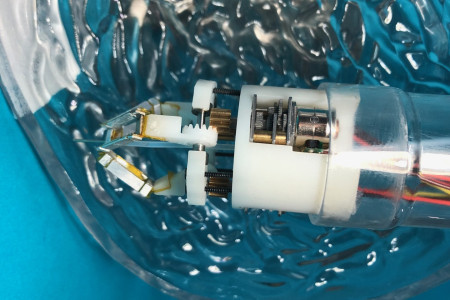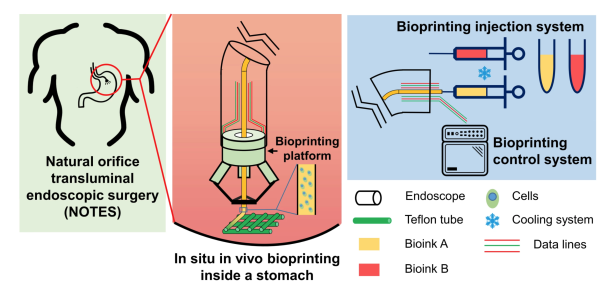
WHY THIS MATTERS IN BRIEF
Surgery shouldn’t always be the only option when it comes to helping treat internal injuries, so now there’s a robot that can heal them for you – from the inside.
 Interested in the Exponential Future? Join our XPotential Community, future proof yourself with courses from our XPotential University, connect, watch a keynote, or browse my blog.
Interested in the Exponential Future? Join our XPotential Community, future proof yourself with courses from our XPotential University, connect, watch a keynote, or browse my blog.
Recently I reported on a new 3D Bio-Printing technology that lets doctors and surgeons print human organs and tissue directly into the human body which many people found astounding in itself. But now a new innovation has emerged from China that makes even that science fiction like capability appear mundane after researchers there unveiled prototype mini robots, equipped with 3D Bio-Printers that can heal wounds from within the human body itself.
Open wounds on the stomach wall can be serious if left untreated, sometimes requiring surgery, and this is where the new robots come into play. While we have already heard about bio-printers designed to help heal wounds, the devices are usually fairly large, and thus are limited to use on external injuries, but now Prof. Tao Xu, working at China’s Tsinghua University, is changing that.
This Bio-Printing robot can print new tissue within the human body.
Collaborating with PhD student Wenxiang Zhao he’s developed a prototype snake-like robot that could be endoscopically inserted into a patient’s stomach. It’s a delta robot, meaning that its head consists of a rigid base surrounded by three independently moving arms, and it folds down to be extra-skinny while being inserted, then opens up upon reaching the wound site.
Once it’s done so, its arms autonomously guide a tube that extrudes two types of hydrogel bio-ink – one of those contains human gastric epithelial cells, while the other contains human gastric smooth muscle cells. These are then deposited in two separate layers, forming a scaffold that covers the patients wound.
“We tested the system in two ways,” says Zhao. “First, with a biological model of a human stomach and an endoscope to mimic the insertion and printing operation elements of the process. Second, we carried out a bio-printing test in a cell culture dish to test how effective the device was at bio-printing viable cells and repairing wounds. A 10 day cell culture showed that printed cells remained at a high viability and a steady proliferation, which indicated good biological function of the cells in printed tissue scaffolds,” he said.
Xu adds that more work still needs to be done, however, such as further miniaturising the robot’s printing platform, and refining the bioinks, but as we continue to see this type of technology develop and get more compact one has to wonder when we’re going to see nanobots equipped with this kind of functionality that, like these prototypes I showed off last year, are then able to perform in vivo human surgery – something that needless to say won’t only change medicine, but will also change the human condition and take us another step closer to the Singularity.
The research is described in a paper that was recently published in the journal Biofabrication.
Source: IOP Publishing


















